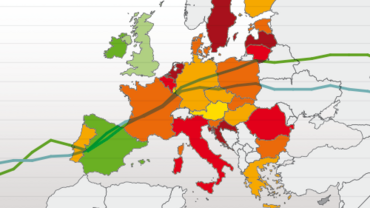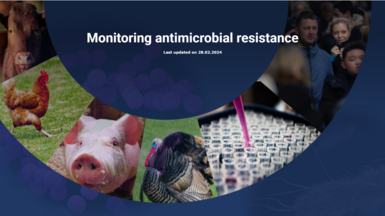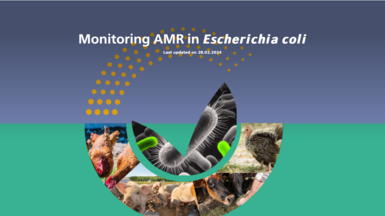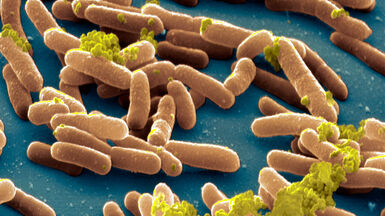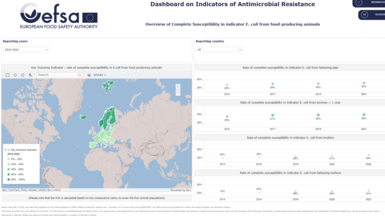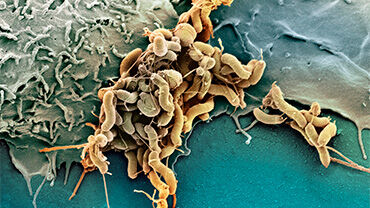Joint EFSA-ECDC EU report: Bacteria resistant to key antimicrobials still routinely found in humans and animals
Recent surveillance data reveal that resistance to commonly used antimicrobials — such as ampicillin, tetracyclines, and sulfonamides— remains persistently high in both humans and animals for key pathogens including Salmonella and Campylobacter.
Resistance in E. coli is also frequently observed in animals, although resistance of Salmonella in laying hens is low. These are the main findings of a report issued today by the European Food Safety Authority (EFSA) and the European Centre for Disease Prevention and Control (ECDC).
According to Carlos Das Neves, EFSA Chief Scientist and Piotr Kramarz, ECDC Chief Scientist:
‘A comprehensive One-Health approach is essential to tackling AMR. Robust surveillance systems, prudent antimicrobial use, and cross-sector collaboration are critical to mitigate the risk posed by antibiotic-resistant bacteria that can spread between animals and humans.’
The high resistance to ciprofloxacin, a critically important fluoroquinolone antimicrobial for treatment of Salmonella and Campylobacter infections, is a growing concern. Resistance to ciprofloxacin was found to be increasing in Salmonella Enteritidis and Campylobacter jejuni from humans in over half of the European countries that submitted data. High to extremely high proportions of ciprofloxacin resistance have been observed in Campylobacter from food-producing animals, and in Salmonella and E. coli from poultry specifically. These trends are particularly worrying as the 2024 World Health Organization list of harmful bacteria classifies fluoroquinolone-resistant non-typhoidal Salmonella (Salmonella serotypes that do not cause typhoid fever) as a high priority.
In contrast, resistance to other critically important antimicrobials used in human medicine remains uncommon for Salmonella and Campylobacter, both for humans and food-producing animals.
Although carbapenem resistance remains rare, the occasional detection of carbapenem resistant E. coli in food and animals calls for sustained vigilance and further epidemiological investigations. This is especially important because carbapenem-resistant Enterobacterales bacteria are recognised as a critical threat to public health. To support this effort, in 2025 EFSA will publish the first in a series of opinions on the current status of the occurrence and spread of carbapenemase-producing Enterobacterales in the food chain in the European Union/European Economic Area and Switzerland.
However, there are also positive trends, with data revealing significant progress in reducing resistance levels in several reporting countries. Nearly half of the European countries that submitted data indicated a decline in resistance of Campylobacter to macrolide antibiotics, in both C. jejuni and C. coli, in human cases. Furthermore, resistance of Salmonella Typhimurium isolates from humans to penicillins and tetracyclines has decreased over time. The significant increasing trends in the key outcome indicator for complete susceptibility of E. coli, as well as the significant decreasing trends in the key outcome indicator for prevalence of ESBL-/AmpC-producing E. coli show that there has been encouraging progress in reducing AMR in food-producing animals in several EU Member States over the last 10 years.
Despite some improvements, antimicrobial resistance remains a major public health threat that requires coordinated action with a One-Health approach. Key measures include promoting the responsible use of antimicrobials, improving infection prevention and control, investing in research for new treatments, and implementing strong national policies to combat resistance effectively.
EFSA and ECDC are publishing a plain language summary — a simplified version of the EU summary report on antimicrobial resistance in zoonotic and indicator bacteria from humans, animals and food in 2022–2023 — along with several interactive communication tools.
Human food and waterborne antibiotic resistance data is published in ECDC’s Surveillance Atlas of Infectious Diseases (under the diseases campylobacteriosis, salmonellosis and shigellosis, respectively).
Read the report
Surveillance and monitoring
The European Union summary report on antimicrobial resistance in zoonotic and indicator bacteria from humans, animals and food in 2022–2023
This report presents the main findings of the 2022–2023 harmonised antimicrobial resistance (AMR) monitoring in Salmonella spp., Campylobacter jejuni and Campylobacter coli from humans and food-producing animals (broilers, laying hens and fattening turkeys, fattening pigs and cattle under 1 year of age) and derived meat.





